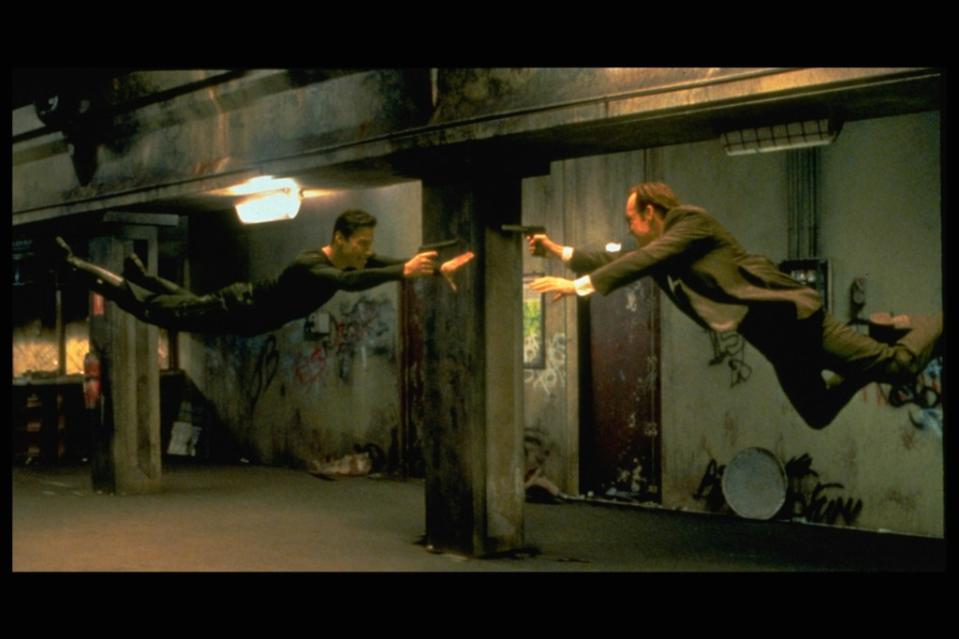A.I., a new ‘superhuman’ and the Fourth Industrial Revolution is just the latest revival of Friedrich Nietzsche’s ‘Superman’ concept
“Man is something that shall be overcome,” the German philosopher Friedrich Nietzsche wrote in his 1883 classic Thus Spoke Zarathustra. “Man is a rope, tied between beast and superman—a rope over an abyss. What is great in man is that he is a bridge and not an end.”
When he wrote this, the famously troubled intellectual was reckoning with ambivalent feelings about German culture (including a fallout with his friend, the composer Richard Wagner), a series of illnesses, and an opium habit that very likely constituted a drug addiction. But he was also grappling with what historians call the Second Industrial Revolution, that is, the revolution of mass production.
Much of Nietzsche’s writings, obscure in his own lifetime, foreshadowed a 20th century full of what he called “nihilism,” especially his famous proclamation, “God is dead.” In his place was the superman, or “Übermensch,” a determiner of his own life, who eschews traditional Christian mores and births his own system of values that allows him to conquer all human challenges. Now artificial intelligence is here, and modern technologists are proclaiming a “Fourth Industrial Revolution” that will give birth to a new “superhuman,” which begs the question, is humanity still the proverbial rope over the abyss?
It’s worth a look back at how we got here.
Faster than a speeding bullet
During times of technological upheaval, it seems that Nietszche’s prophecy of the birth of the Übermensch always reemerges. There are two famous examples—you already know them.
First, about a half-century after Nietzsche conceived his version, Action Comics released its first issue in 1939, featuring a character named “Superman” who went on to become the very first comic-book superhero just as the world was hurtling into the atomic age, recently depicted in the blockbuster smash hit, “Oppenheimer.” As society digested the breakthroughs of the Second Industrial Revolution, creating modern cities full of elevators, skyscrapers and cars, Superman represented a figure who could easily conquer modern technology. It was all there in the catch phrase: “Faster than a speeding bullet! More powerful than a locomotive! Able to leap tall buildings in a single bound!” (Even this phrase itself was industrial in nature, originating in a 1940 show for the radio, an entirely new technology.)

While Nietzsche’s Übermensch was an embodiment of religious rejection, a being who transcended the mores of the Christian church, the character of Superman nodded to generations of human advancement, with abilities including bulletproof skin and laser-beaming eyes.
Moreover, Nietzsche’s Übermensch was an aspirational concept whose name literally evokes a higher plane, and DC’s Superman is from the alien world of Krypton, a planet more sophisticated than Earth. Not only is Superman physically superior to the normal man, but he retains aspects of the original Übermensch as a pillar of moral uprightness. Even in his alter ego as Clark Kent, he is morally infallible as an idealistic journalist (the most morally correct profession, of course).
The superman goes hand-in-hand with the concept of transhumanism embraced by capitalists and technologists—the idea that advanced technology will allow humans to transformatively augment themselves and their environment. It harkens back to Nietzsche’s vision of man as a “rope” and “something to be overcome,” or in the transhumanist view, a base for mechanization. Within transhumanism is the concept of the “new man,” a utopian ideal of the perfect person, a concept coopted decades after Nietzsche’s death by non-Democratic movements ranging from Communism to Fascism to its subset, Nazism, each of which envisioned the perfect citizen created through science and tech. Even the most casual student of 20th century history knows this went tragically and horrifically wrong.
While these concepts seem bizarre to a 21st century digital native, they’re actually still heavily embedded into mainstream politics and pop culture. The world’s richest man himself, Elon Musk, is a known transhumanist who is actively working on projects to colonize space and insert computer chips into our brains. Science fiction has flourished by examining variations on the superman and the transhuman, often in dystopian ways, for example with Blade Runner in the 1980s and The Matrix more recently. Even this summer’s smash hit Barbie movie dabbles in transhumanism, as a plastic doll blessed with the stereotypical ideal of femininity and beauty ventures into the real world, although several readings of that film land with the takeaway that there’s just no way to be a Superwoman in modern life.

Whatever happened to the Superman of the 21st century?
We see the superman concept, especially as it intersects with technology, as a frequently used political tool because of the inherent stratification an “ideal” person erects. And although transhumanism is toyed with by socialists and capitalists alike, sociologists have theorized that political transhumanism could birth Capitalism 2.0, an era hyperfixated on tech-driven productivity leaps.
Now, as we are rounding the bend on the Fourth Industrial Revolution—the revolution of smart automation, interconnectivity, and artificial intelligence—philosophy buffs may be wondering what will emerge as the Übermensch of our time. While it's early, to be sure, history hints that people will search for an aspirational icon that can transcend the power frameworks of our time.
One person has already posited a theory that our Übermensch will be A.I.: Masayoshi Son, one of the world’s richest men, has already labeled the invention as the “Birth of Superhuman.” Son, who has been a major venture capital investor for decades and is the CEO of Japan’s SoftBank, announced to investors this year that the emergence of ChatGPT brought him to a tearful existential crisis over A.I. and the meaning of life, before deciding to dedicate his company and career to “design[ing] the future of humanity.” Sounds slightly tangential to Nietzsche’s crisis on nihilism.
This surely isn’t to say that Son is the next Nietzsche—but the resemblance to the Übermensch is unmistakable. Son told SoftBank shareholders that he pitches and refines ideas with A.I. every day, and had used the tool to develop over 600 new inventions in less than a year. Through a transhumanist lens, he’s using emerging technology to hugely augment his intelligence and ideation abilities. As the world goes through another technological upheaval, and people look for an aspirational entity that can transcend the power framework of our time, it’s important to ask what that framework is. Arguably, it’s information.
In the way that Nietzche’s Übermensch controlled his own infallible set of morals, or comic books’ Superman controlled his invulnerable body, perhaps the parallel can be drawn of A.I. controlling its vast, 10,000 chip-cache of knowledge. The difference is that the Übermensch and Superman existed as fictional characters, without any real way for people to interact with them. They were aspirational, while A.I. is a real tool that’s driving rapid change in the world.
It’s too early to say how A.I. will transform the workforce, but we should probably take any notion of a superhuman with a grain of salt. Maybe humanity is a rope over an abyss, but the surest way to fall into it is through the pursuit of superpowers through technology.
This story was originally featured on Fortune.com
More from Fortune:
5 side hustles where you may earn over $20,000 per year—all while working from home
Looking to make extra cash? This CD has a 5.15% APY right now
Buying a house? Here's how much to save
This is how much money you need to earn annually to comfortably buy a $600,000 home
